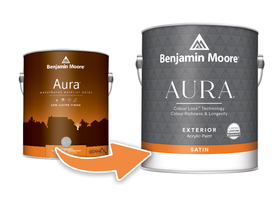Paint brushes come in a variety of shapes, sizes, and materials. Most novice painters don’t know which brushes to choose when starting a job, and will end up using more paint, time, and effort than is actually required. Usually, a job will require a variety of brushes, depending on the types of paint and the areas being painted. In this week’s blog we are going to cover the basics of choosing a paint brush, and go over some common situations you will encounter when painting.
Choosing Bristle Materials
The bristle material you will choose is dependent on the type of paint being used. Bristles can be synthetic polyesters, synthetic nylon, a combination of both, or animal hair (called natural bristles). Synthetic bristles brushes are best to use for latex paint, while natural-bristle brushes are best used with oil-based alkyds. Using a natural-bristle brush with latex paints will result in poor coverage, as the bristles will absorb the latex and become droopy. You can always check the label to see what kind of paints the brush is best used with.
Brush Shape
There are two basic bristle shapes for surface painting: square cut, and sash. Square cut (also called straight brushes) are pretty much how they sound, providing a flat, squared off end that is useful for painting large areas. Sash brushes are cut at an angle, and are mostly used for corners and edges, and getting those hard to reach spaces. Sash brushes may also be called angle-cut or trim brushes. It’s best to have at least one of each type for any job. Paint the majority of the surface with the square brushes and switch to the sash to cut in on those edges and corners.
Tips
The tips of the bristles can also have an impact on the quality of your paint job. High quality brushes will typically have split ends (also known as flagged ends) which are able to hold more paint and get the job done in fewer strokes. Most precision brushes, like sash brushes have “tipped” ends which means that they are pointed. This is not to be confused with regular brush tips, which are flat. Tipped ends are favored for their precision while flagged ends are favored for their coverage.
Brush size and width
The size is obviously dependent on the area that you are painting. If you are painting a small area, make sure to choose a brush that is slightly smaller in width than the area you are painting. If the brush is the same size, or larger, it will overlap the edges and cause dripping that looks pretty bad. For your small angle sash brushes, you will want to choose one that has a shorter handle, giving you more flexibility to cut in around edges.
Rollers
Rollers consist of two main components: the roller fram, and the roller cover. When choosing a cover, go by the guidelines we laid down earlier regarding bristle types, meaning you will want to use synthetic materials for latex paints. The frame mostly determines the size of the roller cover that will go on it. There are two main frame types: regular and weenie rollers. Weenie rollers are smaller, and used for touch-up work and tighter surfaces.
This post should get you started with choosing brushes for your first paint job. We have not discussed every type of paint brush, but only the most commonly used tools of the trade. You may also want to research foam paint brushes if you are painting intricate moldings or flashings. Stay tuned for more great posts from Primetime Paint and Paper next month!




